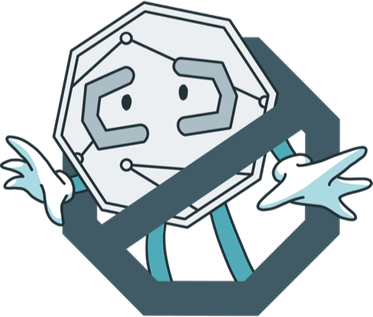Artificial Intelligence (AI) revolutionizes medical diagnosis, treatment, and patient care. AI was once a work of fiction, but today, it permeates our everyday lives thanks to technological advancements. The AI landscape in the medical industry is run by companies that range from pioneering startups to tech giants such as Google. The innovations from these companies are solving real problems we face within the medical sector. Their innovations make healthcare more accessible, efficient, and personalized, marking a significant leap towards a future where technology and medicine integrate to improve human health.
This article will explore 12 medical AI companies that are transforming healthcare practices, improving patient outcomes, and shaping the future of medicine. Let’s dive in.
Top 12 Medical AI Companies
1. Google Health
Google Health, a pivotal arm of the tech giant Google, is creating revolutionary products already improving global health outcomes. One of their products, Automated Retinal Disease Assessment (ARDA), assists in diagnosing diabetic retinopathy. The condition is a potential cause of total blindness. A first-hand experience by Yossi Matias, a team member in Thailand, revealed that ARDA could diagnose 40 patients in an hour, with a turnaround time of two minutes.
Google is walking the talk in AI. Other areas in which they have shown progress with AI include breast cancer detection, skin disease classification, eye disease classification, lung cancer detection, and cancer metastases detection. The technologies also provide better diagnoses than medical personnel. In a study, researchers pitted AI against human radiologists, and the AI outperformed them by an average of 11.5%!
2. Butterfly Network
Butterfly Network is single-handedly changing radiology with its innovative handheld ultrasound device, the Butterfly iQ. The device also uses proprietary ultrasound chip technology, which reduces its size and cost while enabling a diverse range of ultrasound scans. The device works alongside a smartphone or tablet.
Now imagine being able to diagnose a person without medical knowledge; that is precisely how Butterfly iQ envisions its application.
In the video, the physician, Jarone Lee, explains that learning to study medical images takes years of training and, in most cases, longer to gain experience. The handheld device provided analysis insights in a matter of minutes.
We cannot underestimate the impact of such technology; Butterfly Network is democratizing healthcare to millions globally. People under socio-economic distress can now benefit from early detection and treatment. As the technology evolves, it paves the way for new models of healthcare delivery, such as telemedicine, where real-time imaging data support remote consultations.
3. Augmedix
Augmedix solves a problem that many physicians endure: entering a patient’s data into electronic health records (EHRs). After seeing their patients, doctors spend a lot of time feeding the data into EHRs, a manual process that can result in burnout and less time interacting with patients.
Augmedix can extract data from physician-patient conversations and process them into real-time clinical notes while feeding them into the EHR system.
Their product, Augmedix Go, is a clinician-controlled mobile app that uses AI technology and structured data to create a fully automated draft medical note in real time after each patient visit. The app is easy to use, economical, and scalable for many clinicians in a health facility.
4. CloudMedx
CloudMedx uses powerful data analysis algorithms on healthcare data to provide actionable insights. CloudMedx’s ‘Healthcare In a Box’ coordinates clinical operations and financials within a single platform, simplifying the decision-making process for patients, providers, and payers. The technology leverages natural language processing (NLP) and machine learning (ML) to process unstructured data into fine-tuned data pipelines for use cases such as rule extraction, registry reporting, and custom software systems.
CloudMedx also provides predictive analytics, offering insights such as projections on disease progression, readmission, and length of stay. The platform is already ready to deploy models for over 20 chronic conditions.
5. Corti
Corti is rewriting the medical virtual assistant rulebook. Unlike conventional assistants, the Corti AI Co-pilot takes unstructured data from the respondent and uses it to relay medical insights. This feature makes the tool handy for emergency call operators and paramedics to analyze real-time information to detect critical conditions such as cardiac arrest.
The tool can identify unstructured data such as verbal cues, background noises, and voice tones. The video above shows how crucial the tool can be in providing support during emergencies and enhancing the efficiency and effectiveness of emergency medical services. Notice how the tool can request the nearest ambulance while attempting to keep the patient calm.
6. Enlitic
Elitic leverages deep learning technologies to provide powerful insights into medical images with unprecedented speed and accuracy. The product can detect anomalies, such as fractures, tumors, and other conditions, often more precisely than radiologists.
The product is unique in that it goes beyond analyzing images to streamline radiology workflows. This feature enables faster and more accurate diagnosis.
The Enlitic Framework standardizes and analyzes data to create an evidence-based medical imaging database that improves clinical workflows, increases efficiencies, and expands capacity. The data is anonymized to ensure data privacy and then enriched to increase its value for research, quality improvement, and monetization strategies.
7. Tempus
The Tempus platform harnesses the power of AI to revolutionize healthcare through precision medicine. The platform has one of the world’s most extensive clinical and molecular data collections and an operating system to make this data accessible and valuable.
The platform offers several groundbreaking technologies: Tempus ONE, an AI-powered clinical assistant; NEXT, A tool designed to identify and address gaps in care; PIXEL, which delivers actionable insights derived from medical images; and ALGOS, algorithmic models that provide additional insight when connected to their assays.
Here are some impressive statistics from Tempus:
- 50%+ of all US Academic Medical Centers are connected to Tempus
- 50%+ US oncologists are connected to Tempus through sequencing, clinical trial matching, and research-enabled partnerships
- 90% of the top 20 pharma oncology companies partner with Tempus
- 26,000+ patients have been identified for potential enrollment into clinical trials in their network
- ~200 petabytes of data
8. Caption Health
Caption Health has emerged as a leader in medical ultrasound imaging interpretation with its AI-powered software, Caption AI. Caption AI can provide real-time ultrasound examination guidance, meaning that even with limited experience, you can capture high-quality images and videos.
In 2016, the company brought its technology to Kenya to help identify Rheumatic Heart Disease (RHD) among school-going children. The AI algorithm would then make an educated guess on the probability of a child’s results being consistent with RHD. The company scanned 1200 school-going children during the trip and identified 48 with RHD.
Caption AI facilitates the democratization of early detection and monitoring of heart conditions by enabling more widespread access to quality ultrasound imaging, leading to timely interventions.
9. Behold.ai
Behold.ai developed Red Dot, an award-winning medical imaging and diagnosis platform. The platform uses deep learning to classify chest X-rays (CXR) and localize its findings as heat maps. In a hospital in Essex, Red Dot reduced the backlog of CXR from 4-88 weeks to just 2.5 days. At NHS Trust, it reduced the CXR workload from 7 days to a mere 7 seconds.
Here are more statistics on Red DOT from Behold.ai:
- 15% of CXRs auto-reported as normal, instantly removing them from the reporting workload.
- The AI rule-out normal algorithm can reduce outsourcing costs by up to 70%.
- 0.33% error rate on false positives compared to 13.5% for consultant radiologists.
- 60% reduction in false negatives implementing red dot® triage alongside consultant radiologists.
10. Deep Genomics
Deep Genomics approaches genetic medicine from an artificial intelligence angle. Their AI platform is trained on vast genetic data sets that enable it to understand diseases’ genetic underpinnings and help develop targeted therapies. The AI provides an upper hand due to its ability to sift through vast amounts of data, accelerating drug discovery and opening up new avenues for personalized medicine.
The AI platform simulates millions of potential genetic scenarios to identify promising therapeutic targets often missed by conventional methods. The platform has already led to the discovery of novel drug candidates.
Simply put, Deep Genomics untangles the complexities of RNA in biology, identifies novel targets, and evaluates thousands of possibilities to determine the best therapeutic candidates.
11. Ada Health
Ada is a Berlin-based healthcare company that offers a self-assessment application for end-users. Initially developed as a service for physicians, the app was reoriented in 2016 to cater to patient comprehension. It boasts nearly 13 million users and operates by comparing reported symptoms with those of similar patients by age and gender, subsequently estimating the statistical probability of a specific diagnosis. The app supports multiple languages, including English, German, Spanish, Portuguese, Swahili, Romanian, and French.
Here is one independent review from one of its users:
I had a really bad ear infection that lasted a while, so I put my symptoms in on this app. It asked me a lot of questions and told me that my symptoms could be a busted eardrum. I didn’t believe at first. I went to a doctor later that month, and they told me that my right eardrum was busted.
12. Atomwise
Atomwise, headquartered in San Francisco, focuses on minimizing drug development costs through supercomputing. Its AtomNet technology employs convolutional neural networks—an AI technology also used in autonomous vehicles and voice recognition systems—to predict effective medication candidates by analyzing a vast database of molecular structures. AtomNet’s predictive capabilities are informed by millions of experimental data points and thousands of protein structures, facilitating the identification of promising drug candidates by assessing molecule-to-protein bindings. Atomwise made a $1.2 billion research partnership with Sanofi, utilizing the AtomNet platform to discover small molecules targeting up to five drug objectives. This collaboration utilized deep learning for structure-based drug discovery, expediting the search through Atomwise’s extensive library of over 3 trillion synthesizable compounds.
Conclusion
Integrating artificial intelligence into healthcare is not just a fleeting trend but a transformative movement reshaping the landscape of medical diagnosis, treatment, and patient care. Companies like Google Health, Tempus, Augmedix, and Atomwise are at the forefront of this revolution, leveraging AI to enhance the accuracy of diagnostics, streamline healthcare workflows, and personalize patient care. Innovators like Butterfly Network and Enlitic make medical imaging more accessible and accurate. Deep Genomics and Caption Health are pioneering new approaches to drug discovery and in-home healthcare services, proving that AI has a crucial role in addressing the global healthcare challenges of the 21st century.
As these companies continue to push the boundaries of what’s possible, the future of healthcare looks increasingly promising, marked by advancements that promise to improve patients’ lives worldwide.





